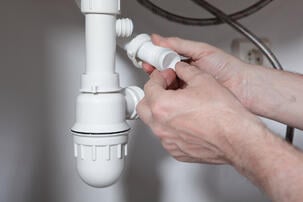Listed here further down you might get additional exceptional answers when it comes to What to Know About Plumbing: Basics, Tips, and Insights.

Plumbing is a crucial facet of any type of home, responsible for supplying clean water for alcohol consumption, cooking, and bathing, as well as removing wastewater securely. Recognizing the fundamentals of home plumbing is vital for every homeowner to make sure proper maintenance, troubleshooting, and, if essential, repair services. In this novice's guide, we'll cover the basic ideas of home plumbing to help you come to be much more knowledgeable about how it functions.
Supply Of Water System
The supply of water system brings tidy water into your home from a municipal water resource or a personal well. It includes a major water line that links to your home's plumbing system, generally situated underground. A water meter determines the quantity of water taken in, while a shut-off valve allows you to regulate the flow of water right into your home.
Plumbing Components
Plumbing fixtures are devices that deliver water to different parts of your home and include sinks, faucets, toilets, showers, tubs, and home appliances such as dishwashers and washing machines. Each component is linked to the supply of water system using pipes and fittings and might have its shut-off shutoff for maintenance or emergencies.
Water Heater
The water heater is responsible for heating water for domestic usage, including bathing, cooking, and cleansing. Common types of water heaters include tank-type hot water heater, tankless (on-demand) water heaters, and heat pump hot water heater. The water heater is connected to the water supply system and delivers warm water to plumbing fixtures as needed.
Drain System
The water drainage system removes wastewater from your home and carries it away to a sewer treatment center or septic tank. It includes a network of pipes, fittings, and fixtures that move wastewater from plumbing components to the major sewer line or septic tank. Correct drain is vital to prevent blockages, back-ups, and sewage leakages.
Ventilation System
The air flow system assists keep correct atmospheric pressure and stop drain gases from entering your home. Vent pipes, also called vent stacks, prolong from plumbing components to the roofing system, enabling drain gases to escape safely outdoors. Air flow pipes additionally allow air to go into the water drainage system, facilitating smooth wastewater circulation and protecting against suction or vacuum impacts.
Typical Plumbing Tools
Having the right devices available is essential for doing standard plumbing repair work and maintenance jobs. Common plumbing devices include flexible wrenches, pipe wrenches, pliers, pipe cutters, hacksaws, bettors, augers (or drain snakes), and Teflon tape. Having these tools readily available can assist you tackle small plumbing concerns successfully.
Fundamental Plumbing Repair Work
While some plumbing repairs might need expert aid, lots of typical concerns can be addressed with fundamental do it yourself techniques. Learning just how to repair a dripping tap, unblock a drainpipe, change a commode flapper, or repair a dripping showerhead can save you time and money on plumbing repairs.
Verdict
Recognizing the fundamentals of home plumbing is necessary for every single house owner to preserve a secure, useful, and effective plumbing system. By acquainting yourself with the water system, plumbing fixtures, water drainage system, air flow system, usual plumbing tools, and fundamental repair services, you can with confidence address small plumbing concerns and guarantee your home's plumbing system runs smoothly.
Understanding Basics of Home Plumbing System: A Beginner's Guide
The Main Components of Your Home Plumbing System
The Water Supply System
This system is responsible for transporting fresh water into your home. It usually has a main water line that splits into two branches: one directed towards cold water services and the other connected to a water heater for hot water. The pressure is key here; it ensures water reaches all parts of your house.
The Drainage System
Once water has been used, it becomes wastewater that needs to be removed from your home. This is where the drainage system comes into play. It includes all the pipes that carry wastewater and sewage away from your house to sewage treatment facilities or septic tanks.
The Vent System
The vent system prevents sewer gases from entering your home and helps maintain the pressure balance that allows wastewater to flow out properly. These vents usually exit through the roof of your house.
Water Heating System
For those who enjoy hot showers or using hot water for cleaning, the water heater is a crucial part of the plumbing system. It can be a tankless system, which heats water on demand, or a traditional water tank model.
Common Plumbing Problems and Basic Troubleshooting
Plumbing systems, while designed to be durable, can face issues like clogged drains, leaky faucets, or low water pressure. Here are some basic troubleshooting tips:
Clogged Drains
Use a plunger or a plumber's snake to try and dislodge whatever is blocking the drain. Regular cleaning can prevent clogs.
Leaky Faucets
Often caused by worn-out washers or gaskets, these can usually be replaced by someone with basic DIY skills.
Low Water Pressure
This might be due to sediment build-up in your fixtures or a leak somewhere in your water line. Cleaning out aerators or seeking a professional to detect leaks might be necessary.
Preventive Maintenance Tips
Maintaining your plumbing system is key to avoiding emergencies. Regularly check for leaks, avoid disposing of grease down the sink, and have your system inspected by a professional plumber at least once a year.

I discovered that write up on Plumbing Basics Every Homeowner Should Know while doing a lookup on the search engines. Are you aware of somebody who is interested by the topic? Feel free to promote it. We appreciate your readership.
Call Today